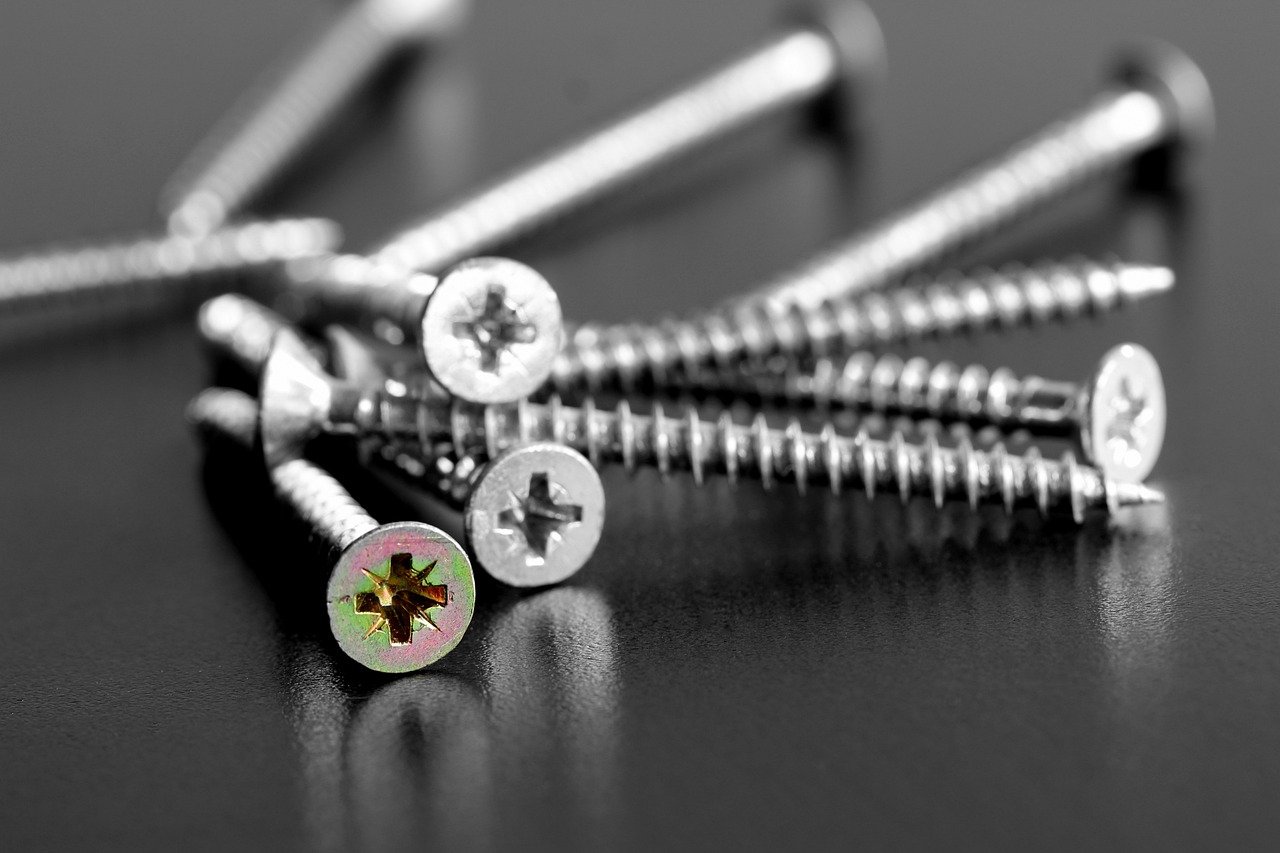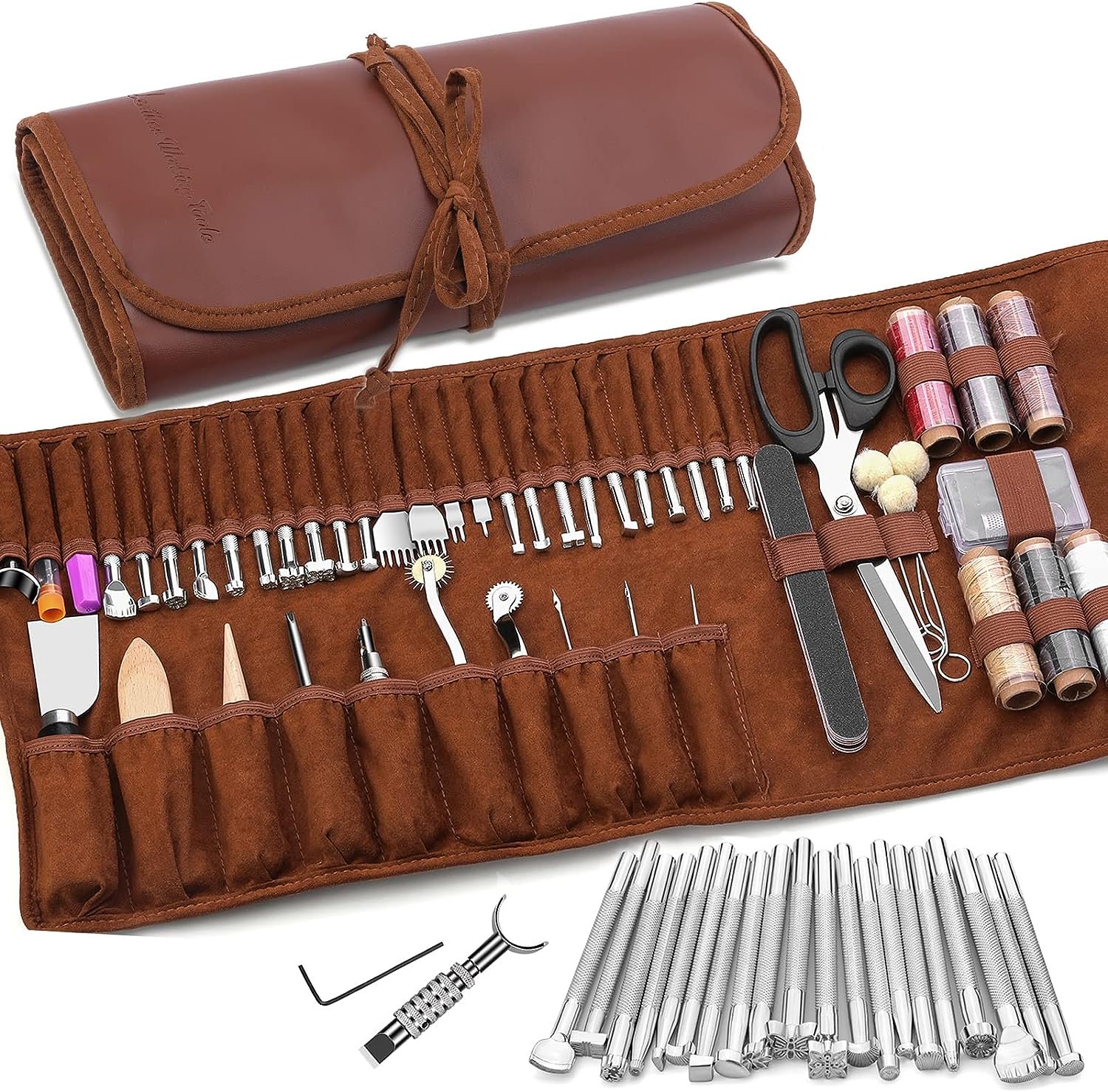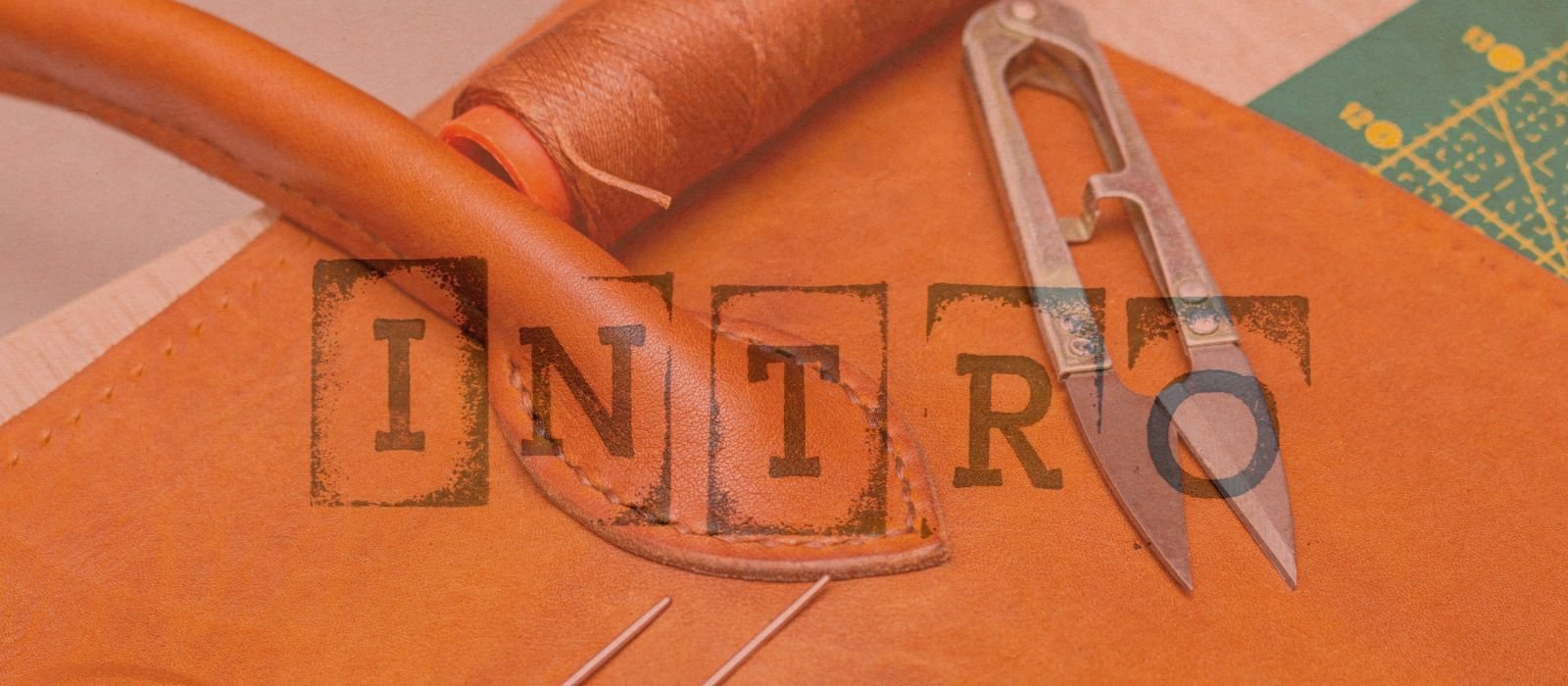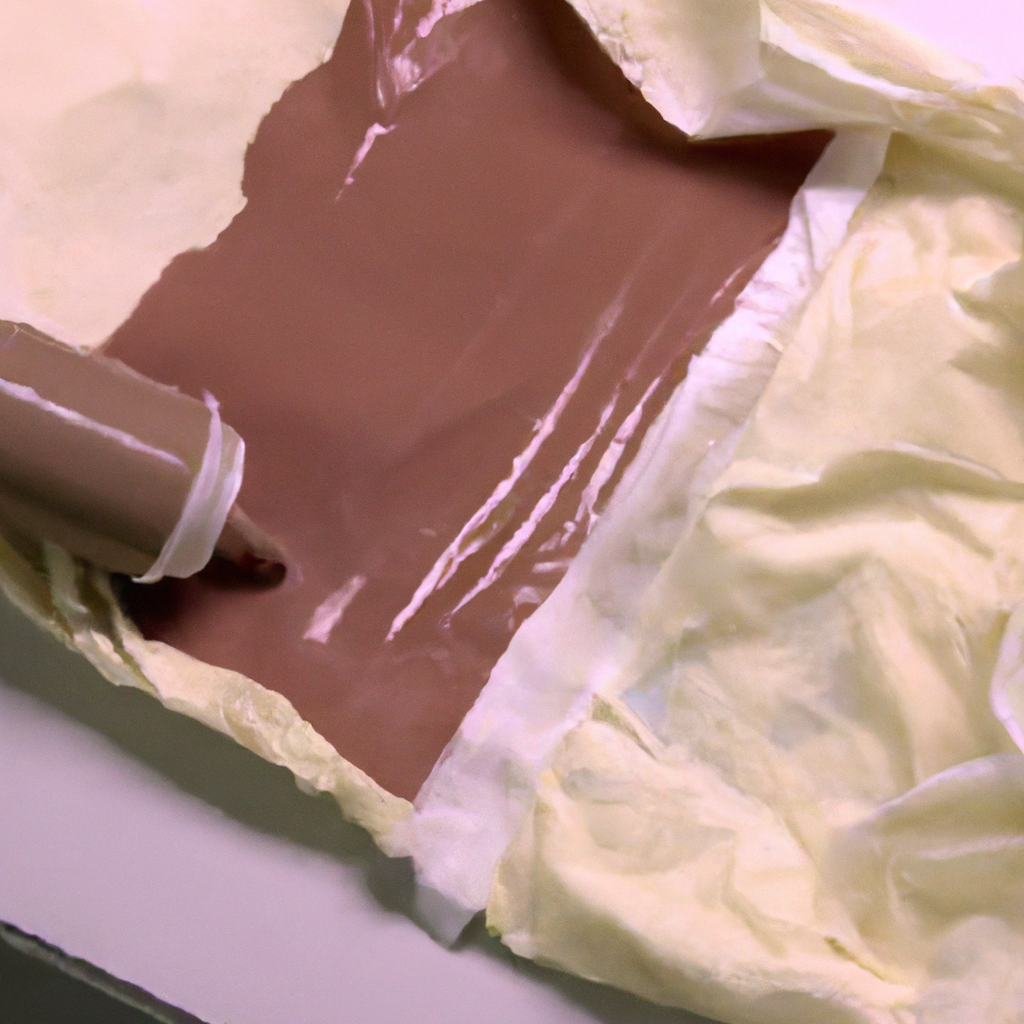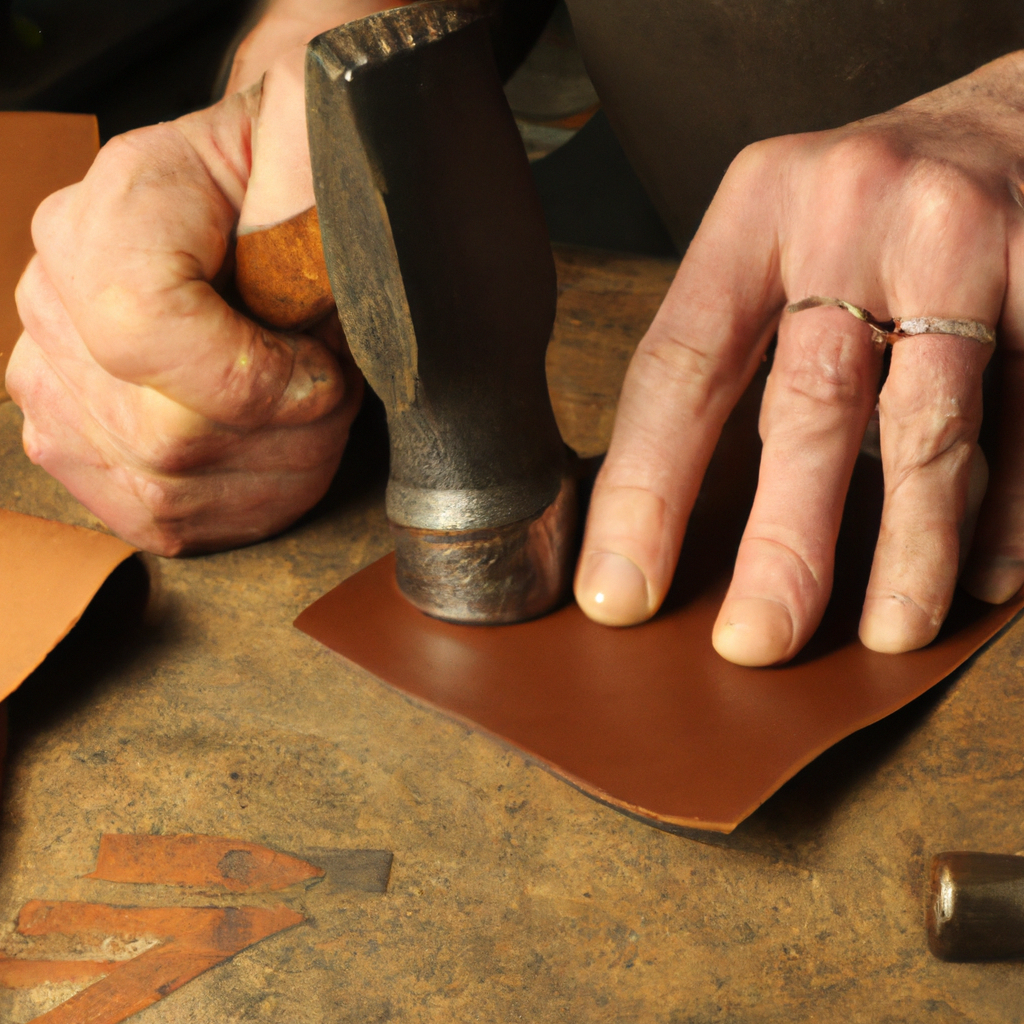Are you looking to enhance your woodworking skills and boost your sales in the process? Look no further! In this article, we will explore the world of tooling techniques that are not only popular but also have a high demand in the market. From carving intricate designs to creating flawless joints, we will uncover the secrets behind these common tooling techniques that are sure to fly off your shelves. So, grab your tools and get ready to take your woodworking business to the next level!

1. Woodworking
Woodworking is a popular hobby and craft that involves shaping, cutting, and joining wood to create various items. Whether you’re a seasoned woodworker or just starting out, having the right tools is crucial to achieving quality results. In woodworking, there are three main categories of tools: hand tools, power tools, and specialized tools.1.1 Hand tools
Hand tools are essential for any woodworking project. They allow for precise control and the ability to work on small details. Some common hand tools used in woodworking include:- Chisels: Chisels are used for carving, shaping, and cleaning out mortises or joints.
- Hand saws: Hand saws come in different types, such as crosscut saws, rip saws, and coping saws, and are used for cutting wood.
- Planes: Planes are used to smooth out surfaces, flatten wood, and create grooves.
- Files and rasps: Files and rasps are used for shaping and smoothing wood surfaces.
- Hammers and mallets: Hammers and mallets are used for driving nails, joinery, and shaping wood.
1.2 Power tools
Power tools make woodworking tasks faster and more efficient. These tools are powered by electricity or batteries and are designed to handle heavier workloads. Some common power tools used in woodworking include:- Circular Saw: A circular saw is a versatile tool used for making straight cuts in wood.
- Power Drill: A power drill is a versatile tool that can be used for drilling holes, driving screws, and more.
- Router: Routers are used for cutting shapes, creating edges, and hollowing out wood.
- Jigsaw: A jigsaw is a saw used for cutting intricate shapes and curves in wood.
- Random Orbital Sander: A random orbital sander is used for sanding wood surfaces to create a smooth finish.
1.3 Specialized tools
Specialized tools are designed for specific woodworking tasks and can help you achieve more intricate and precise results. Some common specialized tools used in woodworking include:- Dovetail Jig: A dovetail jig is used to create strong and decorative joints.
- Miter Saw: A miter saw is used for making precise angled cuts.
- Lathe: A lathe is used for shaping wood by rotating it against a stationary tool.
- Biscuit Joiner: A biscuit joiner is used for creating strong joints by cutting slots for biscuits.
- Mortising Machine: A mortising machine is used for cutting square or rectangular holes in wood.
2. Metalworking
Metalworking is the process of shaping, cutting, and joining metal to create various items. It requires different tools than woodworking due to the nature of working with metal. Just like woodworking, metalworking tools can be categorized into hand tools, power tools, and cutting and shaping tools.2.1 Hand tools
Hand tools are essential for metalworking projects and are used for tasks that require precision and control. Some common hand tools used in metalworking include:- Hammers: Metalworking hammers are used for shaping and forming metal.
- Files: Files are used for smoothing and shaping metal surfaces.
- Vises: Vises hold metal pieces in place securely while you work on them.
- Clamps: Clamps are used for holding pieces together during welding or other metalworking processes.
- Pliers: Pliers are used for bending and gripping metal.
2.2 Power tools
Power tools make metalworking tasks faster and more efficient. They are designed to handle the tougher nature of metal. Some common power tools used in metalworking include:- Angle Grinder: An angle grinder is a versatile tool used for cutting, grinding, and polishing metal.
- Drill Press: A drill press is used for drilling precise holes in metal.
- Metal Cutting Bandsaw: A metal cutting bandsaw is used for cutting metal rods, pipes, and other shapes.
- Welder: A welder is used for joining metal pieces together through welding.
- Bench Grinder: A bench grinder is used for shaping, sharpening, and cleaning metal objects.
2.3 Cutting and shaping tools
Cutting and shaping tools are specifically designed for working with metal and allow you to cut and shape metal accurately. Some common cutting and shaping tools used in metalworking include:- Plasma Cutter: A plasma cutter uses a high-temperature jet of ionized gas to cut through metal.
- Shears: Metal shears are used for cutting straight lines in metal.
- Metal Lathe: A metal lathe is used for shaping metal by rotating it against a stationary tool.
- CNC Milling Machine: A CNC milling machine uses computer-controlled movements to cut and shape metal with precision.
- Metal Files: Metal files are used for smoothing and shaping metal surfaces.
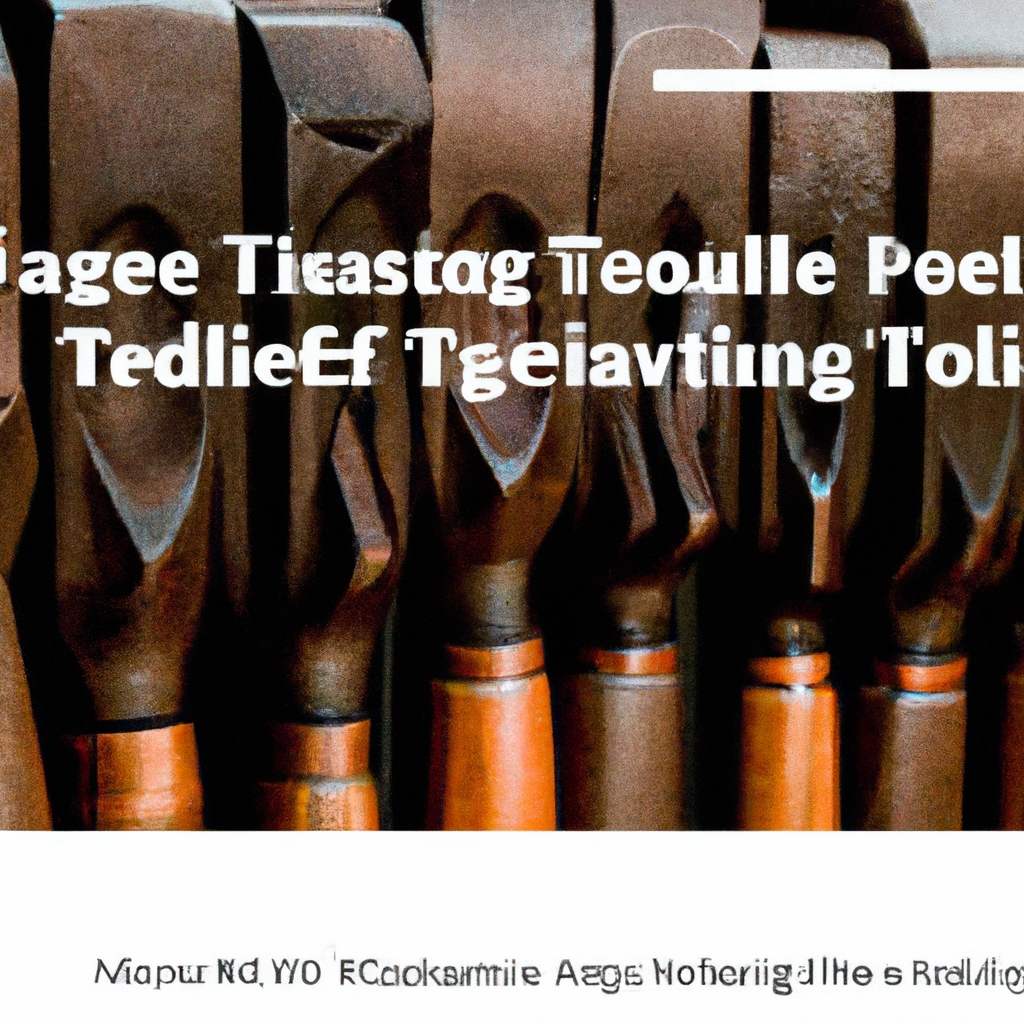
3. Automotive
Automotive tools are designed specifically for working on cars and other vehicles. Whether you’re a professional mechanic or a car enthusiast, having the right tools can make all the difference. Automotive tools can be categorized into diagnostic tools, repair and maintenance tools, and specialty tools.3.1 Diagnostic tools
Diagnostic tools are used to identify and troubleshoot problems in vehicles. They help in diagnosing engine issues, electrical problems, emissions issues, and more. Some common diagnostic tools used in automotive work include:- OBD-II Scanner: An OBD-II scanner is used to read the diagnostic trouble codes (DTCs) from a vehicle’s onboard computer system.
- Multimeter: A multimeter measures voltage, current, and resistance and can help diagnose electrical issues.
- Fuel Pressure Gauge: A fuel pressure gauge is used to measure the pressure of the fuel system to diagnose fuel-related issues.
- Compression Tester: A compression tester is used to measure the compression pressure in each cylinder of an engine.
- Battery Load Tester: A battery load tester is used to test the capacity and health of a vehicle’s battery.
3.2 Repair and maintenance tools
Repair and maintenance tools are essential for any automotive work, whether it’s changing oil, replacing brake pads, or performing more complex repairs. Some common repair and maintenance tools used in automotive work include:- Socket Set: A socket set is a collection of different-sized sockets and ratchets used for loosening and tightening nuts and bolts.
- Wrenches: Wrenches are used for turning nuts and bolts, and they come in various types, including adjustable wrenches and torque wrenches.
- Screwdrivers: Screwdrivers are used for turning screws and often come in different sizes and types, such as Phillips-head and flat-head screwdrivers.
- Jack and Jack Stands: A jack is used to lift a vehicle off the ground, while jack stands are used to safely support the vehicle.
- Oil Filter Wrench: An oil filter wrench is used to remove and replace oil filters during oil changes.
3.3 Specialty tools
Specialty tools are designed for specific automotive tasks or for working on specific parts of a vehicle. These tools may not be used as frequently but are vital for certain repairs or modifications. Some common specialty tools used in automotive work include:- Brake Caliper Tool: A brake caliper tool is used to compress the brake caliper piston when replacing brake pads or rotors.
- Spark Plug Socket: A spark plug socket is a specialized socket used for removing and installing spark plugs.
- Timing Light: A timing light is used to adjust the ignition timing of an engine.
- Ball Joint Separator: A ball joint separator is used to separate ball joints from control arms or other components.
- Serpentine Belt Tool: A serpentine belt tool is used to release tension on the serpentine belt for removal or installation.
4. Construction
Construction work requires a range of tools to complete various tasks, from measuring and leveling to cutting and fastening. Having the right tools can ensure accuracy and efficiency in construction projects. Construction tools can be categorized into measuring and leveling tools, cutting and drilling tools, and fastening tools.4.1 Measuring and leveling tools
Measuring and leveling tools are essential for ensuring accuracy in construction projects. They are used to measure distances, levels, and angles. Some common measuring and leveling tools used in construction work include:- Tape Measure: A tape measure is used for measuring distances accurately.
- Spirit Level: A spirit level, or bubble level, is used to determine if a surface is level or plumb.
- Laser Level: A laser level projects a beam of light to create a level reference line or a plumb line.
- Angle Finder: An angle finder is used to measure and transfer angles accurately.
- Chalk Line: A chalk line is used to mark straight lines on surfaces.
4.2 Cutting and drilling tools
Cutting and drilling tools are used for making precise cuts and creating openings in various materials. Some common cutting and drilling tools used in construction work include:- Circular Saw: A circular saw is a versatile tool used for making straight cuts in materials like wood, plastic, and metal.
- Jigsaw: A jigsaw is used for cutting curved and intricate shapes in various materials.
- Hole Saw: A hole saw is used for cutting round holes in materials like wood, plastic, and metal.
- Rotary Hammer Drill: A rotary hammer drill is used for drilling holes in materials like concrete and masonry.
- Reciprocating Saw: A reciprocating saw, or a Sawzall, is used for cutting through various materials quickly.
4.3 Fastening tools
Fastening tools are used to join materials together securely. They are essential for construction projects that require structural integrity. Some common fastening tools used in construction work include:- Cordless Drill: A cordless drill is a versatile tool used for drilling holes and driving screws.
- Nail Gun: A nail gun is used for quickly and efficiently driving nails into various materials.
- Staple Gun: A staple gun is used for attaching materials together with staples.
- Screwdriver: A screwdriver is an essential tool for driving screws into materials.
- Pneumatic Finish Nailer: A pneumatic finish nailer is used for driving nails below the surface of the material for a clean finish.

5. Plumbing
Plumbing is an essential aspect of any building, and having the right plumbing tools is crucial for repairs, installations, and maintenance. Plumbing tools can be categorized into pipe cutters and wrenches, pliers and fitting tools, and drain cleaning tools.5.1 Pipe cutters and wrenches
Pipe cutters and wrenches are essential tools for working with pipes, fittings, and valves. They enable you to cut and tighten pipes effectively. Some common pipe cutters and wrenches used in plumbing work include:- Pipe Cutter: A pipe cutter is used to cut pipes cleanly and accurately.
- Pipe Wrench: A pipe wrench is used for gripping and turning pipes, fittings, and other plumbing components.
- Basin Wrench: A basin wrench is used for tightening or loosening nuts and bolts in tight spaces, such as under sinks.
- Adjustable Wrench: An adjustable wrench, also known as a crescent wrench, is used for turning nuts and bolts of different sizes.
- Strap Wrench: A strap wrench is used for gripping and turning pipes, fittings, or other cylindrical objects without damaging their surfaces.
5.2 Pliers and fitting tools
Pliers and fitting tools are used for gripping, holding, and manipulating various plumbing components. They enable you to install or remove fittings with ease. Some common pliers and fitting tools used in plumbing work include:- Adjustable Pliers: Adjustable pliers, such as slip-joint pliers, are used for gripping and turning nuts, bolts, and fittings.
- Pipe Fitting Brush: A pipe fitting brush is used for cleaning the inside of pipes and fittings before installation.
- Pipe Crimping Tool: A pipe crimping tool is used for creating secure connections in PEX (cross-linked polyethylene) plumbing systems.
- Tubing Cutter: A tubing cutter is used to cut plastic or copper tubing cleanly and accurately.
- Compression Fitting Tool: A compression fitting tool is used for installing compression fittings, which create watertight connections without soldering or welding.
5.3 Drain cleaning tools
Drain cleaning tools are used to remove clogs and obstructions from drains and pipes. They help keep plumbing systems functioning properly. Some common drain cleaning tools used in plumbing work include:- Plunger: A plunger is used to create suction and dislodge clogs in sinks, toilets, and drains.
- Drain Snake: A drain snake, also known as a plumbing auger, is used to remove clogs deep within pipes.
- Drain Cleaning Chemicals: Chemical drain cleaners are used to dissolve clogs and clear drains.
- Sewer Rod: A sewer rod is used for clearing clogs in larger sewer lines and drains.
- Wet/Dry Vacuum: A wet/dry vacuum is used to remove standing water from drains or clear minor clogs.
6. Electrical
Electrical work involves installing, repairing, and maintaining electrical systems, and having the right tools is essential for safety and efficiency. Electrical tools can be categorized into multimeters and voltage testers, wire strippers and crimpers, and circuit testers and probes.6.1 Multimeters and voltage testers
Multimeters and voltage testers are used to measure electrical voltage, current, and resistance, ensuring electrical safety and proper circuit operation. Some common multimeters and voltage testers used in electrical work include:- Digital Multimeter: A digital multimeter measures voltage, current, resistance, and other electrical parameters.
- Non-Contact Voltage Tester: A non-contact voltage tester identifies the presence of live electrical circuits without direct contact.
- Voltage Tester Pen: A voltage tester pen, or voltage detector, is used to detect the presence of voltage in electrical outlets and wires.
- Clamp Meter: A clamp meter measures current flowing through a wire without disconnecting the circuit.
- Insulation Resistance Tester: An insulation resistance tester measures the resistance of insulation in electrical wires or components.
6.2 Wire strippers and crimpers
Wire strippers and crimpers are used to prepare and terminate electrical wires, ensuring secure and reliable connections. Some common wire strippers and crimpers used in electrical work include:- Wire Strippers: Wire strippers are used to remove the insulation from electrical wires without damaging the conductors.
- Crimping Tool: A crimping tool is used to attach terminals or connectors to electrical wires securely.
- Wire Cutter: A wire cutter is used to cut electrical wires cleanly and accurately.
- Wire Crimper and Stripper: A wire crimper and stripper is a versatile tool that combines wire stripping, cutting, and crimping functions in one.
6.3 Circuit testers and probes
Circuit testers and probes are used to identify and troubleshoot faults in electrical circuits and components. They help ensure proper electrical performance and diagnose electrical issues. Some common circuit testers and probes used in electrical work include:- Circuit Tester: A circuit tester is used to test the presence of electrical voltage in outlets, switches, or wires.
- Test Light: A test light is a simple device used to test for the presence of electrical voltage or to check continuity.
- Oscilloscope: An oscilloscope is a more advanced tool used to visualize and analyze electrical waveforms.
- Logic Probe: A logic probe is used to test and analyze digital circuits, detecting high and low logic levels.
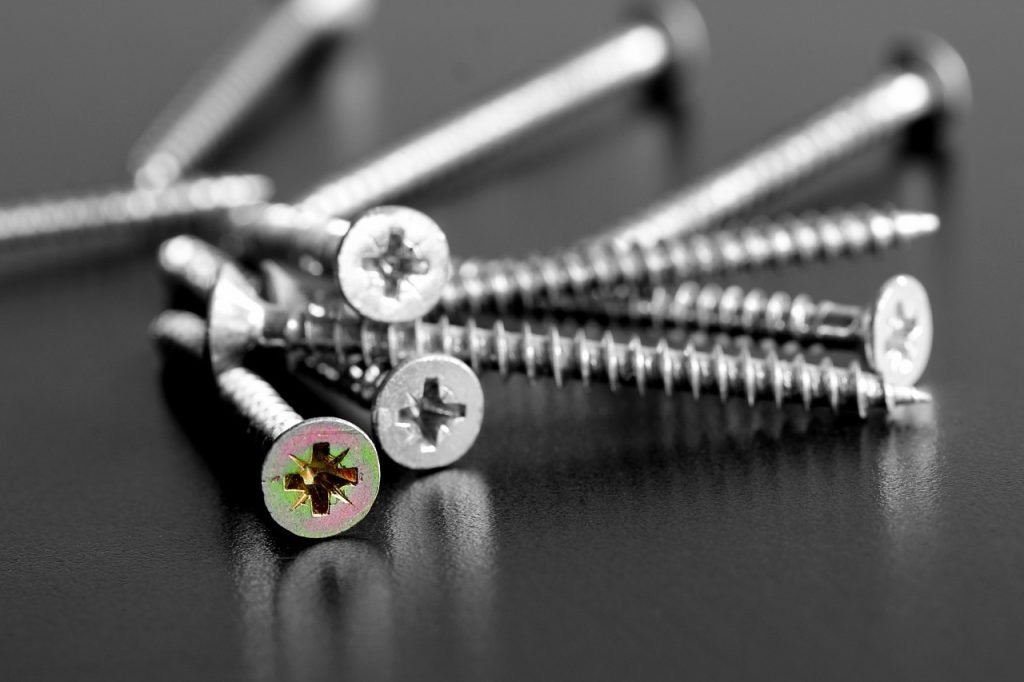
7. Gardening
Gardening is a popular outdoor activity that involves cultivating and maintaining plants, and having the right gardening tools is essential for ensuring healthy plants and a beautiful garden. Gardening tools can be categorized into pruning tools, digging and cultivating tools, and watering and irrigation tools.7.1 Pruning tools
Pruning tools are used for trimming and shaping plants, removing dead or diseased branches, and promoting healthy growth. Some common pruning tools used in gardening include:- Pruning Shears: Pruning shears, or secateurs, are used for cutting small branches and stems.
- Loppers: Loppers have long handles and are used for cutting thicker branches.
- Hedge Shears: Hedge shears are used for trimming hedges and shaping shrubs.
- Pruning Saw: A pruning saw is used for cutting larger branches and limbs.
- Grafting Knife: A grafting knife is used for grafting or budding plants.
7.2 Digging and cultivating tools
Digging and cultivating tools are used for preparing soil, planting, and maintaining gardens. They help loosen soil, remove weeds, and mix soil amendments. Some common digging and cultivating tools used in gardening include:- Garden Trowel: A garden trowel is used for digging small holes, transplanting seedlings, and planting bulbs.
- Hand Rake: A hand rake, also known as a cultivator, is used for breaking up soil and removing weeds.
- Garden Fork: A garden fork is used for loosening soil, turning compost, and digging up root crops.
- Spade: A spade is a larger digging tool used for digging planting holes and moving soil.
- Garden Hoe: A garden hoe is used for slicing through weeds and cultivating the soil.
7.3 Watering and irrigation tools
Watering and irrigation tools are essential for providing plants with the right amount of water, promoting healthy growth, and conserving water. Some common watering and irrigation tools used in gardening include:- Watering Can: A watering can is used for hand-watering plants, especially in small gardens or indoor plants.
- Garden Hose: A garden hose is a flexible hose used for watering plants over larger areas.
- Sprinkler: A sprinkler is used for watering large areas by distributing water in a spray pattern.
- Drip Irrigation System: A drip irrigation system delivers water directly to the roots of plants, conserving water and reducing evaporation.
- Hose Nozzle: A hose nozzle is attached to the end of a garden hose to control the water flow and spray pattern.
8. Painting
Painting is a common home improvement task that involves applying paint to surfaces to enhance aesthetics and protect against wear and tear. Having the right painting tools can make the job easier and help you achieve professional-looking results. Painting tools can be categorized into brushes and rollers, spray guns and airbrushes, and paint preparation tools.8.1 Brushes and rollers
Brushes and rollers are the most commonly used tools for applying paint to surfaces. They allow for precise application and even coverage. Some common brushes and rollers used in painting include:- Paintbrushes: Paintbrushes come in various sizes and types, such as flat brushes, angled brushes, and trim brushes.
- Roller Covers: Roller covers, or roller sleeves, are used with paint rollers for applying paint to large surfaces.
- Foam Brushes: Foam brushes are ideal for small touch-ups, tight spaces, or paint crafts.
- Detail Brushes: Detail brushes have fine bristles and are used for intricate work and detailed painting.
- Paint Pads: Paint pads are a convenient alternative to brushes and rollers for smooth surfaces.
8.2 Spray guns and airbrushes
Spray guns and airbrushes are used for large-scale painting projects or when a smooth, even finish is desired. They allow for quick application and can be used with a variety of coatings. Some common spray guns and airbrushes used in painting include:- HVLP Spray Gun: High Volume Low-Pressure (HVLP) spray guns are efficient and produce less overspray.
- Airless Paint Sprayer: An airless paint sprayer applies paint at high pressure, allowing for quick and even coverage.
- Airbrush: An airbrush is a small, handheld tool that allows for precise and detailed painting.
8.3 Paint preparation tools
Paint preparation tools are used to prepare surfaces before painting, ensuring better adhesion and a smoother finish. Some common paint preparation tools used in painting include:- Sandpaper: Sandpaper is used for smoothing surfaces, removing imperfections, and creating a better surface for paint adhesion.
- Paint Scrapers: Paint scrapers are used to remove loose paint, old coatings, or other imperfections from surfaces.
- Putty Knife: A putty knife is used for filling cracks, holes, or imperfections with putty or spackle.
- Painter’s Tape: Painter’s tape is used to mask off areas that should not be painted.
- Paint Stirrer: A paint stirrer, or paint paddle, is used to mix paint thoroughly before application.

9. Crafting
Crafting involves creating handmade items through various artistic techniques, and having the right tools can enhance your creativity and craftsmanship. Crafting tools can be categorized into cutting and shaping tools, adhesive and fastening tools, and precision measuring tools.9.1 Cutting and shaping tools
Cutting and shaping tools are essential for precise and intricate crafting work. They allow you to create different shapes and sizes in various materials. Some common cutting and shaping tools used in crafting include:- Craft Knife: A craft knife, or precision knife, is used for cutting paper, fabric, or other delicate materials.
- Scissors: Scissors are used for cutting various materials, such as paper, fabric, or ribbon.
- Cutting Mats: Cutting mats provide a protective surface for cutting and help prevent damage to your work area.
- Punches: Punches are used for creating decorative shapes in paper, cardboard, or foam.
- Die Cutting Machine: Die cutting machines are used for cutting out detailed shapes or patterns in various materials.
9.2 Adhesive and fastening tools
Adhesive and fastening tools are used for joining different materials together in crafting projects. They provide a secure and reliable bond. Some common adhesive and fastening tools used in crafting include:- Glue Gun: A glue gun is used for quickly bonding various materials, such as paper, fabric, or plastic.
- Craft Glue: Craft glue is used for bonding materials that may not be suitable for hot glue.
- Tape Runner: A tape runner is used for applying adhesive tape, such as double-sided tape or glue dots.
- Stapler: A stapler is used for securely fastening paper or fabric together.
- Velcro: Velcro is used for creating removable closures on fabric, paper, or other materials.
9.3 Precision measuring tools
Precision measuring tools are used for accurate measurements in crafting projects, ensuring precision and consistency. Some common precision measuring tools used in crafting include:- Ruler: A ruler is used for measuring straight lines and lengths accurately.
- Tape Measure: A tape measure is used for measuring longer distances, such as fabric or larger materials.
- Calipers: Calipers are used for measuring precise dimensions, such as thickness or diameter.
- Protractor: A protractor is used for measuring and drawing angles accurately.
- Compass: A compass is used for drawing circles or arcs of precise sizes.
How Can Tooling Techniques Improve the Clean Lines with a Swivel Knife?
Tooling techniques can significantly enhance the precision and neatness of leatherwork. When using a swivel knife, following certain tips for clean lines with swivel knife can result in smoother and more professional-looking cuts. Applying the right pressure and angle is crucial to achieving clean and seamless lines in leather crafting.
10. DIY Home Improvement
DIY home improvement projects involve making improvements or repairs to your home without hiring professionals. Having the right tools is essential to ensure successful and safe home improvement projects. DIY home improvement tools can be categorized into power drills and drivers, sawing and cutting tools, and fasteners and screws.10.1 Power drills and drivers
Power drills and drivers are versatile tools that can be used for various home improvement tasks, such as drilling holes, driving screws, or removing fasteners. Some common power drills and drivers used in DIY home improvement include:- Drill/Driver: A drill/driver is a versatile tool that combines both drilling and driving functions.
- Impact Driver: An impact driver is designed for driving screws quickly and with high torque.
- Hammer Drill: A hammer drill is used for drilling into harder materials, such as concrete or masonry.
- Cordless Screwdriver: A cordless screwdriver is a compact tool used for driving screws in smaller and tighter spaces.
- Right Angle Drill: A right angle drill is used for drilling in confined or hard-to-reach spaces.
10.2 Sawing and cutting tools
Sawing and cutting tools are essential for various home improvement projects, such as cutting materials, making precise cuts, or removing damaged materials. Some common sawing and cutting tools used in DIY home improvement include:- Circular Saw: A circular saw is a versatile tool used for making straight cuts in various materials, such as wood, metal, or plastic.
- Jigsaw: A jigsaw is used for cutting curved or intricate shapes in different materials.
- Reciprocating Saw: A reciprocating saw, or a Sawzall, is used for cutting through various materials quickly.
- Miter Saw: A miter saw is used for making precise angled cuts, especially for trim work or woodworking projects.
- Utility Knife: A utility knife, or box cutter, is used for cutting various materials, such as cardboard, drywall, or flooring.
10.3 Fasteners and screws
Fasteners and screws are essential for securing materials together during home improvement projects. Some common fasteners and screws used in DIY home improvement include:- Screws: Screws are versatile fasteners used for securing materials together, such as wood, drywall, or metal.
- Nails: Nails are used for securing materials together, primarily in woodworking or construction projects.
- Anchors: Anchors are used to provide additional support when securing items to walls or other surfaces.
- Bolts: Bolts are used for securing heavy materials or structures together.
- Wall Plugs: Wall plugs, also known as wall anchors, are used to provide additional support when securing items to drywall or plaster.

